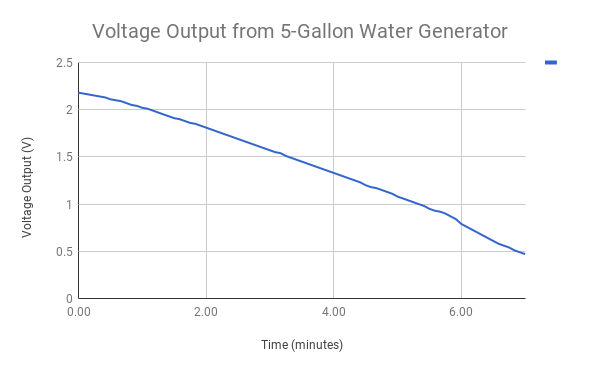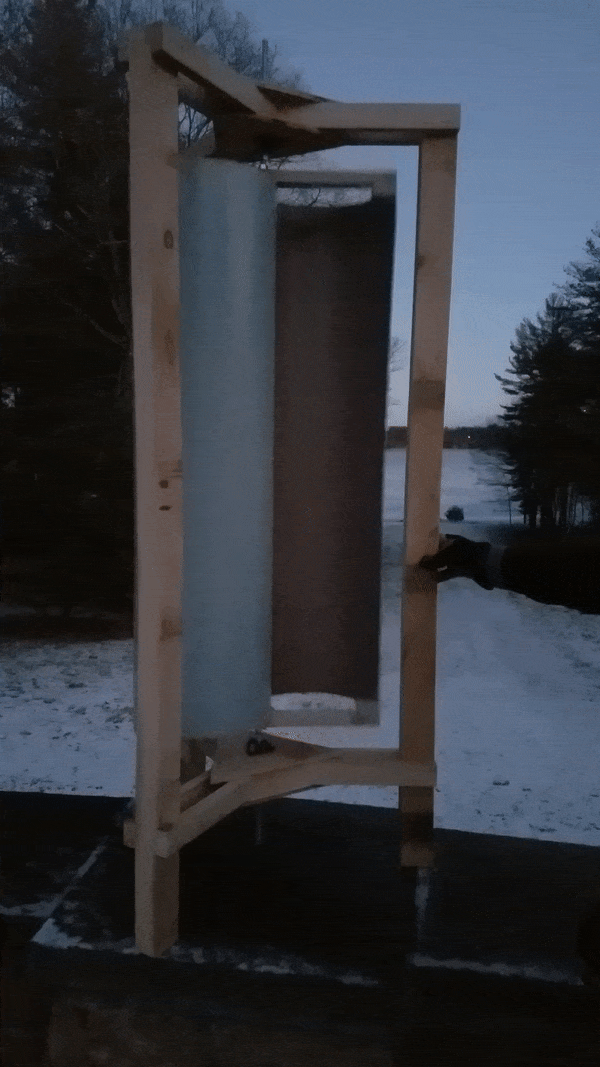|
During our second water generator test, a smaller-voltage-output generator was used (5V), which enabled the generator to begin spinning independently by the movement of the water. This is a lot more practical for a system where autonomous processes are essential to maximize energy efficiency and minimize maintenance. The graph, pictured above, shows that the voltage output from the generator varies nearly directly with the level of the water tank over the span of a few minutes. After 6.5 minutes, the water reservoir ran out and voltage dropped sharply to zero, indicating a minimum voltage output for the generator.
Now that we have confirmed that the water generator functions with a 5-gallon water reservoir, the next step in the research process is to integrate this generator into the rest of the turbine-driven rope pump for full autonomous electricity production. As a quick review, the rope pump (featured in a previous post), driven by the spinning of the wind turbine, will deliver water to the upper reservoir of the water generator which will return it to the lower reservoir by passing through a small generator. The resultant product is electricity that will power a small lightbulb (the current utility chosen to prove the viability of a hydraulic wind turbine).
|
Research TeamMattheus Carpenter Archives
April 2018
Categories |


 RSS Feed
RSS Feed